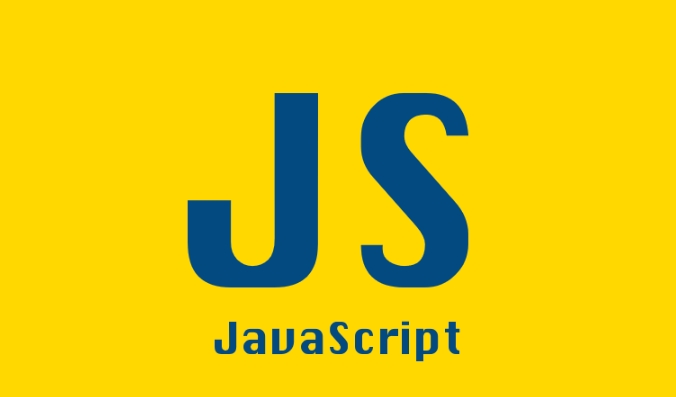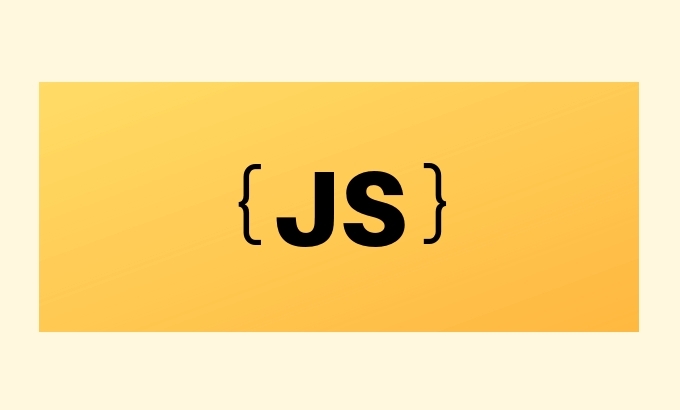Improper use of JavaScript can drag down web page performance and affect Core Web Vitals metrics. 1. To improve FID, main thread blocking should be reduced, long tasks should be split, and scripts should be loaded using Web Worker and asynchronously; 2. To reduce CLS, DOM operations should be controlled, element space should be reserved, CSS animations and picture placeholders should be used; 3. To speed up LCP, delay non-essential JS, adopt SSR/SSG, preload key resources, and optimize image formats and loading methods.

JavaScript is the core of modern web pages, but it can also easily drag performance down. If used improperly, it directly affects three metrics in Core Web Vitals: FID (first input latency), CLS (cumulative layout offset), and LCP (maximum content drawing). Optimizing the execution method of JS can effectively improve user experience and search ranking.

Reduce main thread blockage and improve FID
FID measures the response speed of a user when interacting with a page for the first time, such as clicking a button, selecting a drop-down menu, etc. If JavaScript is executed on the main thread for too long, the browser will not have time to respond to the user's operations.
Optimization suggestions:

- Minimize the execution time of JS, especially the first-screen loading phase.
- Split the long task into small pieces and delay processing with
setTimeoutorrequestIdleCallback. - Use Web Worker to handle complex calculations to avoid blocking the main thread.
- Avoid introducing a large number of synchronization scripts in
and usedeferorasyncattribute instead.
A common problem is that too many third-party libraries, especially scripts that are not lazy or asynchronously loaded, can easily lead to poor FID.
Control DOM operation and reduce CLS
CLS is used to measure the visual stability of the page. When JavaScript dynamically inserting elements, resize or position, if not prepared, it may cause the page to "jump".

FAQs and Coping Methods:
- Make space before inserting advertisements, pictures or videos (such as setting a fixed width and height).
- Avoid modifying the location of elements after loading, and try to render them in place at once.
- Use CSS animations to replace JavaScript dynamic style changes, making them smoother and easier to control.
- When the picture is lazy to load, take up space in advance to prevent the layout from being opened after loading.
For example, when an image suddenly appears in the middle after loading, the text below is pushed down, which is a typical CLS problem. It can be alleviated by setting the container height or using a skeleton screen.
Optimize key resource loading and speed up LCP
LCP focuses on the time the user sees the largest content, usually pictures, videos, or large pieces of text. JavaScript sometimes delays the display of these contents, especially when it waits for JS execution to complete before it starts rendering.
Several effective practices:
- Delay non-essential JS scripts, prioritizing the loading of content needed to render the first screen.
- For content that relies on JS rendering, consider server-side rendering (SSR) or static generation (SSG) to let HTML have content from the beginning.
- Use
rel="preload"to load key resources, such as fonts and pictures in advance. - Images use
loading="lazy"and appropriate formats (such as WebP) to improve loading efficiency.
If the content of your website's first screen is obtained by JS and then rendered, it is likely to affect the LCP score. At this time, SSR or static pre-rendering can play a big role.
Let's summarize
JavaScript itself is not a problem, but its execution and timing have a great impact on performance. The optimization direction is actually very clear:
- Reduce the burden on the main thread and improve the response speed
- Control the DOM operation rhythm to avoid page jitter
- Loading in advance and rendering as early as possible to shorten user waiting time
These details are not difficult to make, but they are easily overlooked. With a little attention to the code structure and loading strategy, Core Web Vitals performance can be significantly improved. Basically that's it.
The above is the detailed content of Improving JavaScript Core Web Vitals (FID, CLS, LCP). For more information, please follow other related articles on the PHP Chinese website!

Hot AI Tools

Undress AI Tool
Undress images for free

Undresser.AI Undress
AI-powered app for creating realistic nude photos

AI Clothes Remover
Online AI tool for removing clothes from photos.

Clothoff.io
AI clothes remover

Video Face Swap
Swap faces in any video effortlessly with our completely free AI face swap tool!

Hot Article

Hot Tools

Notepad++7.3.1
Easy-to-use and free code editor

SublimeText3 Chinese version
Chinese version, very easy to use

Zend Studio 13.0.1
Powerful PHP integrated development environment

Dreamweaver CS6
Visual web development tools

SublimeText3 Mac version
God-level code editing software (SublimeText3)
 How to make an HTTP request in Node.js?
Jul 13, 2025 am 02:18 AM
How to make an HTTP request in Node.js?
Jul 13, 2025 am 02:18 AM
There are three common ways to initiate HTTP requests in Node.js: use built-in modules, axios, and node-fetch. 1. Use the built-in http/https module without dependencies, which is suitable for basic scenarios, but requires manual processing of data stitching and error monitoring, such as using https.get() to obtain data or send POST requests through .write(); 2.axios is a third-party library based on Promise. It has concise syntax and powerful functions, supports async/await, automatic JSON conversion, interceptor, etc. It is recommended to simplify asynchronous request operations; 3.node-fetch provides a style similar to browser fetch, based on Promise and simple syntax
 JavaScript Data Types: Primitive vs Reference
Jul 13, 2025 am 02:43 AM
JavaScript Data Types: Primitive vs Reference
Jul 13, 2025 am 02:43 AM
JavaScript data types are divided into primitive types and reference types. Primitive types include string, number, boolean, null, undefined, and symbol. The values are immutable and copies are copied when assigning values, so they do not affect each other; reference types such as objects, arrays and functions store memory addresses, and variables pointing to the same object will affect each other. Typeof and instanceof can be used to determine types, but pay attention to the historical issues of typeofnull. Understanding these two types of differences can help write more stable and reliable code.
 JavaScript time object, someone builds an eactexe, faster website on Google Chrome, etc.
Jul 08, 2025 pm 02:27 PM
JavaScript time object, someone builds an eactexe, faster website on Google Chrome, etc.
Jul 08, 2025 pm 02:27 PM
Hello, JavaScript developers! Welcome to this week's JavaScript news! This week we will focus on: Oracle's trademark dispute with Deno, new JavaScript time objects are supported by browsers, Google Chrome updates, and some powerful developer tools. Let's get started! Oracle's trademark dispute with Deno Oracle's attempt to register a "JavaScript" trademark has caused controversy. Ryan Dahl, the creator of Node.js and Deno, has filed a petition to cancel the trademark, and he believes that JavaScript is an open standard and should not be used by Oracle
 What is the cache API and how is it used with Service Workers?
Jul 08, 2025 am 02:43 AM
What is the cache API and how is it used with Service Workers?
Jul 08, 2025 am 02:43 AM
CacheAPI is a tool provided by the browser to cache network requests, which is often used in conjunction with ServiceWorker to improve website performance and offline experience. 1. It allows developers to manually store resources such as scripts, style sheets, pictures, etc.; 2. It can match cache responses according to requests; 3. It supports deleting specific caches or clearing the entire cache; 4. It can implement cache priority or network priority strategies through ServiceWorker listening to fetch events; 5. It is often used for offline support, speed up repeated access speed, preloading key resources and background update content; 6. When using it, you need to pay attention to cache version control, storage restrictions and the difference from HTTP caching mechanism.
 Handling Promises: Chaining, Error Handling, and Promise Combinators in JavaScript
Jul 08, 2025 am 02:40 AM
Handling Promises: Chaining, Error Handling, and Promise Combinators in JavaScript
Jul 08, 2025 am 02:40 AM
Promise is the core mechanism for handling asynchronous operations in JavaScript. Understanding chain calls, error handling and combiners is the key to mastering their applications. 1. The chain call returns a new Promise through .then() to realize asynchronous process concatenation. Each .then() receives the previous result and can return a value or a Promise; 2. Error handling should use .catch() to catch exceptions to avoid silent failures, and can return the default value in catch to continue the process; 3. Combinators such as Promise.all() (successfully successful only after all success), Promise.race() (the first completion is returned) and Promise.allSettled() (waiting for all completions)
 Leveraging Array.prototype Methods for Data Manipulation in JavaScript
Jul 06, 2025 am 02:36 AM
Leveraging Array.prototype Methods for Data Manipulation in JavaScript
Jul 06, 2025 am 02:36 AM
JavaScript array built-in methods such as .map(), .filter() and .reduce() can simplify data processing; 1) .map() is used to convert elements one to one to generate new arrays; 2) .filter() is used to filter elements by condition; 3) .reduce() is used to aggregate data as a single value; misuse should be avoided when used, resulting in side effects or performance problems.
 JS roundup: a deep dive into the JavaScript event loop
Jul 08, 2025 am 02:24 AM
JS roundup: a deep dive into the JavaScript event loop
Jul 08, 2025 am 02:24 AM
JavaScript's event loop manages asynchronous operations by coordinating call stacks, WebAPIs, and task queues. 1. The call stack executes synchronous code, and when encountering asynchronous tasks, it is handed over to WebAPI for processing; 2. After the WebAPI completes the task in the background, it puts the callback into the corresponding queue (macro task or micro task); 3. The event loop checks whether the call stack is empty. If it is empty, the callback is taken out from the queue and pushed into the call stack for execution; 4. Micro tasks (such as Promise.then) take precedence over macro tasks (such as setTimeout); 5. Understanding the event loop helps to avoid blocking the main thread and optimize the code execution order.
 Understanding Event Bubbling and Capturing in JavaScript DOM events
Jul 08, 2025 am 02:36 AM
Understanding Event Bubbling and Capturing in JavaScript DOM events
Jul 08, 2025 am 02:36 AM
Event bubbles propagate from the target element outward to the ancestor node, while event capture propagates from the outer layer inward to the target element. 1. Event bubbles: After clicking the child element, the event triggers the listener of the parent element upwards in turn. For example, after clicking the button, it outputs Childclicked first, and then Parentclicked. 2. Event capture: Set the third parameter to true, so that the listener is executed in the capture stage, such as triggering the capture listener of the parent element before clicking the button. 3. Practical uses include unified management of child element events, interception preprocessing and performance optimization. 4. The DOM event stream is divided into three stages: capture, target and bubble, and the default listener is executed in the bubble stage.






